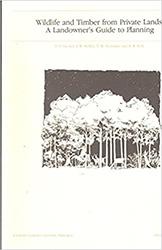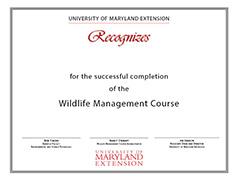This course is designed for individuals wishing to increase their understanding of wildife and wildlife management. Specifically, the course targets Maryland landowners and other citizens with an interest in the principles and practices of wildife management. There are no prerequisites; however, owning or having access to property is necessary to complete the framework of the required wildlife management plan.
The course is divided into five units, with each unit containing between 2-10 lessons. As a review, there is a quiz containing several questions at the end of each lesson. There are also assignments following most lessons. Resource information is located in the appendices.


